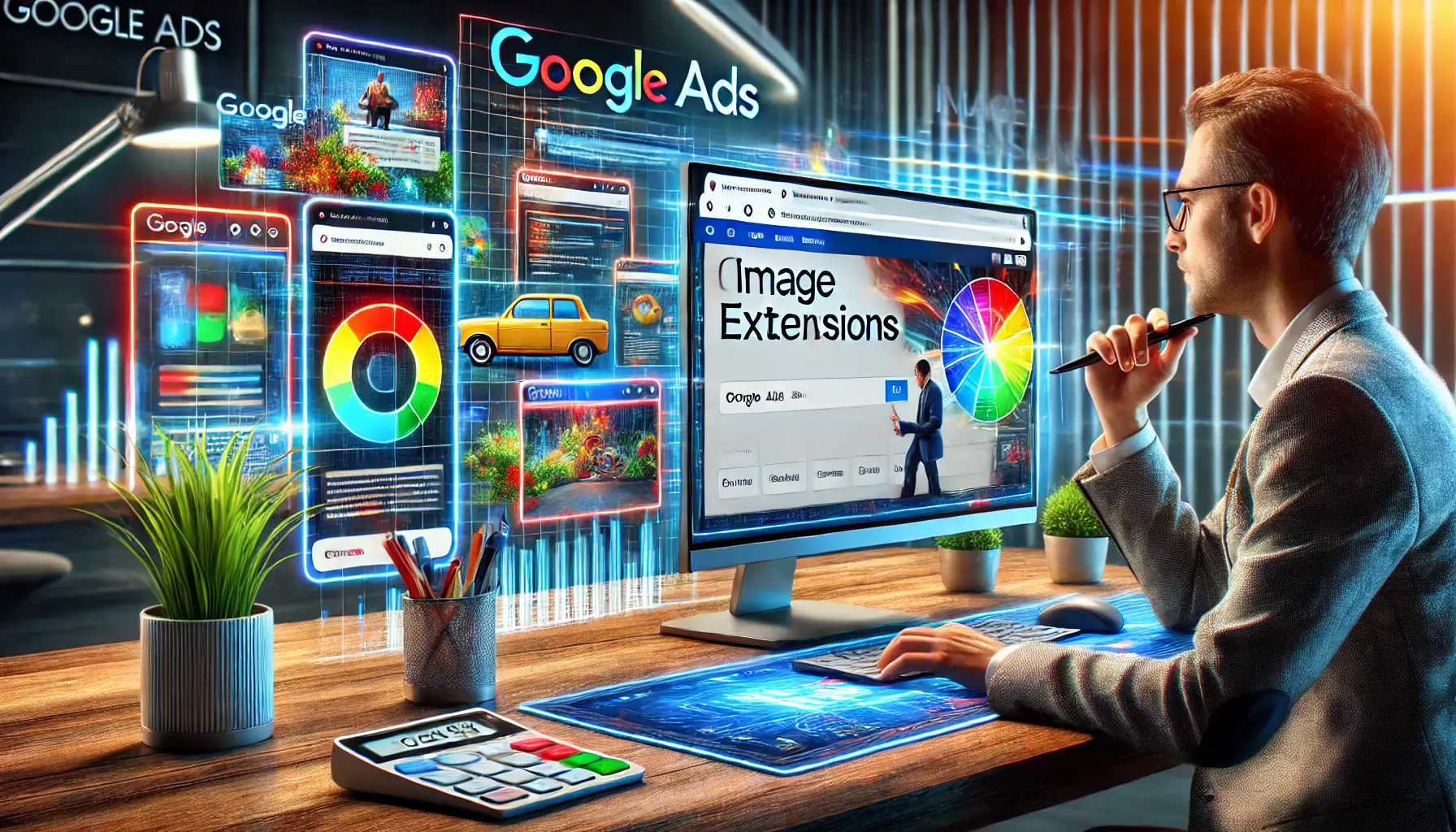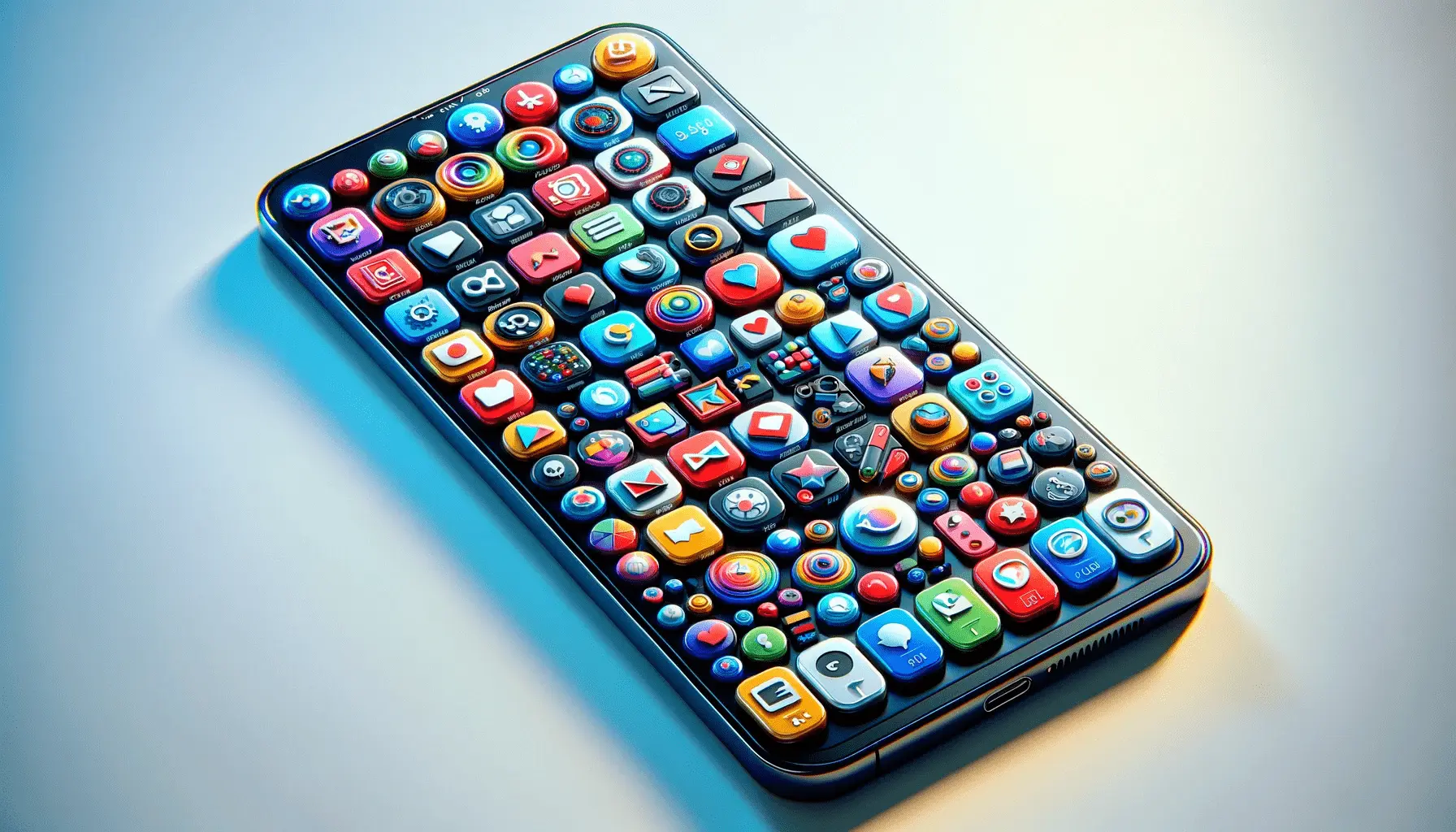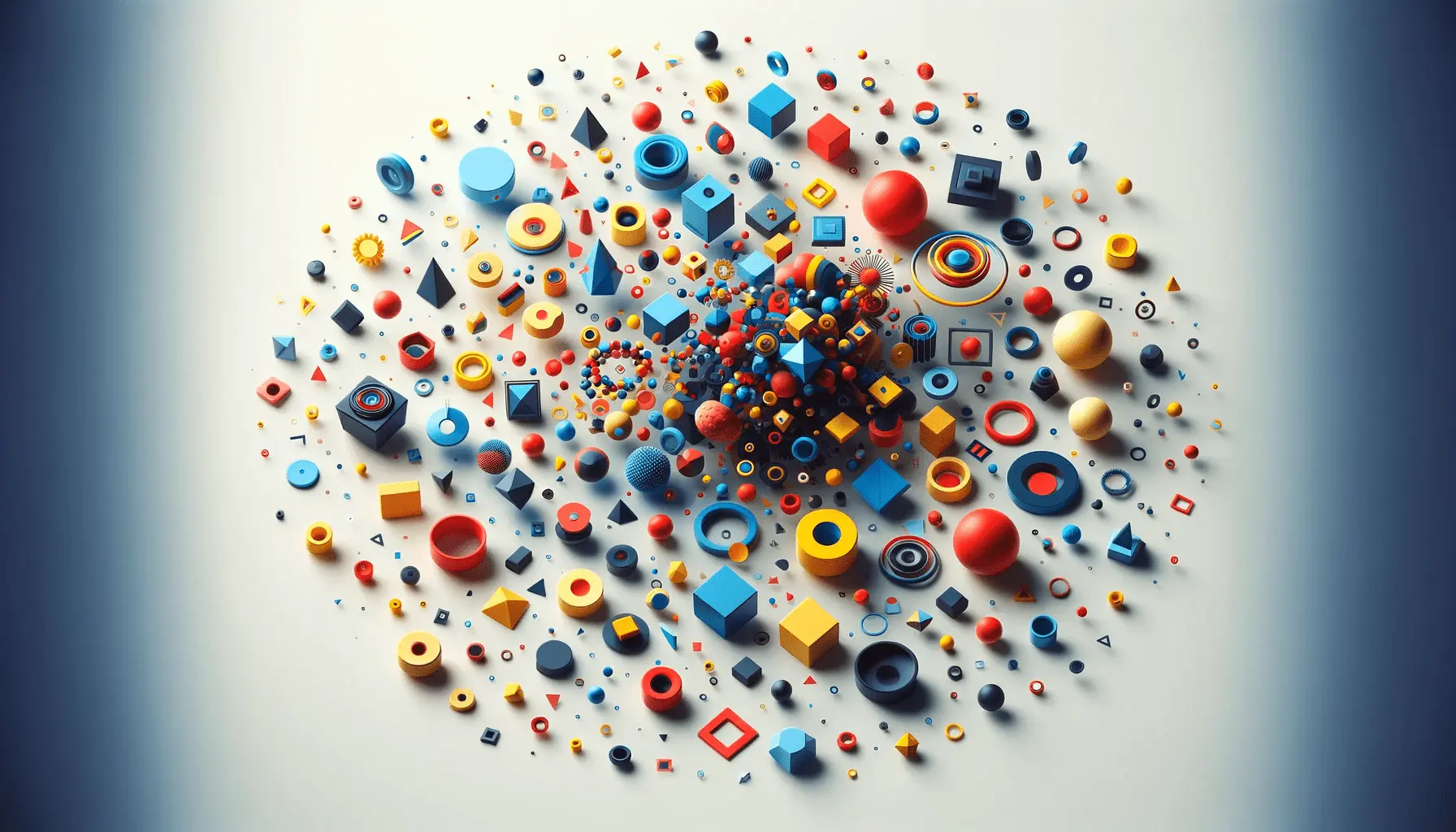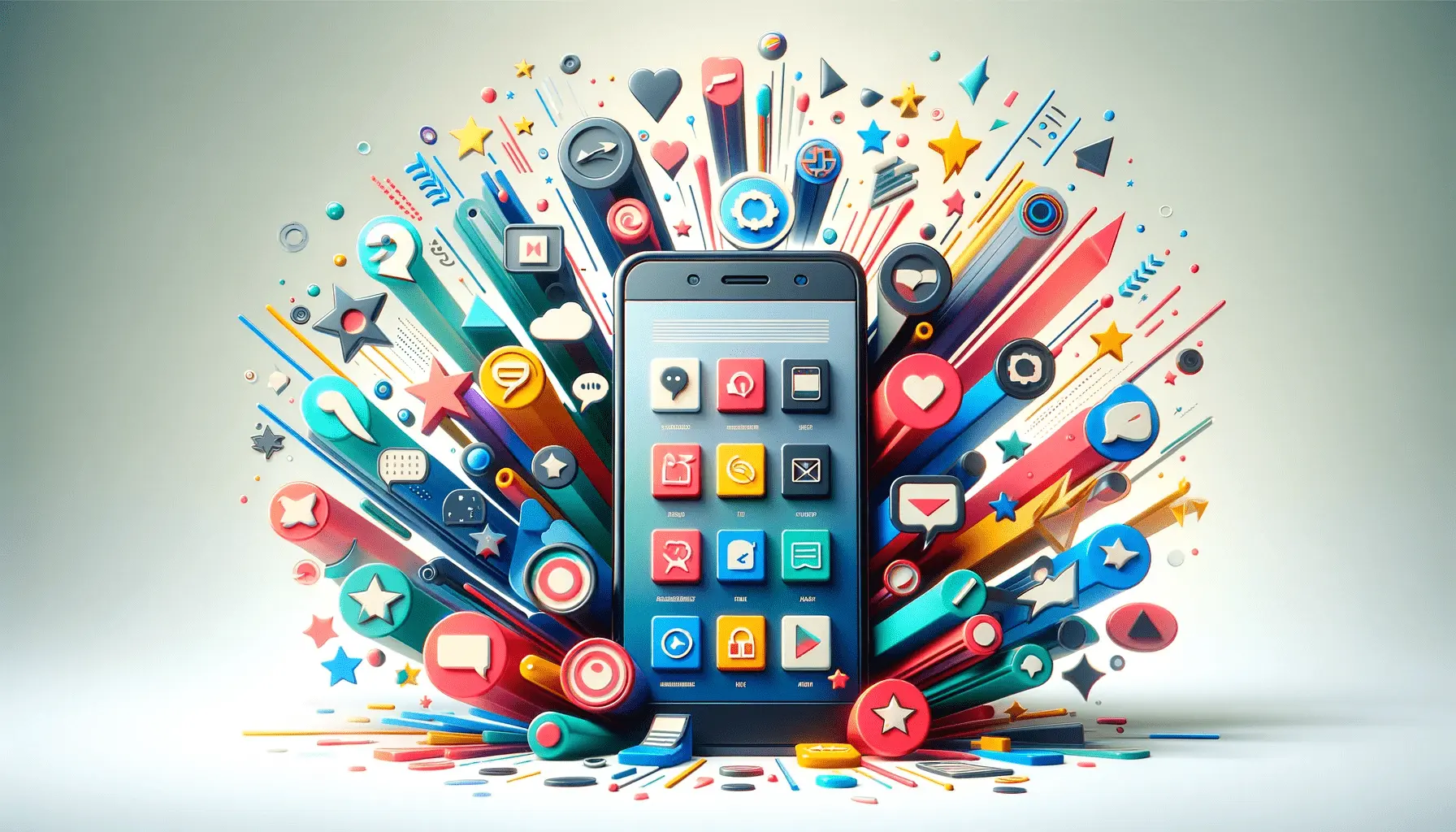The digital landscape is teeming with apps vying for user attention, making the optimization of icon textures more crucial than ever in distinguishing an app from its competitors.
The visual appeal of app icons plays a significant role in user engagement and retention, influencing the decision to download or bypass an app entirely.
This article delves into the art and science of optimizing icon textures to enhance visual appeal, providing a comprehensive guide for developers, designers, and marketers aiming to improve their app’s performance in app stores.
Icon textures are not merely about aesthetics; they embody the app’s essence, functionality, and brand identity.
An effectively designed icon can communicate the app’s purpose at a glance, making it a pivotal element of App Store Optimization (ASO).
As we explore the nuances of icon texture optimization, we will uncover strategies that cater to creating an impactful first impression, thereby increasing the likelihood of app selection and download by potential users.
- The Importance of Icon Texture in ASO
- Design Principles for Icon Texture Optimization
- Texture Techniques for Different App Genres
- Optimizing Icon Textures for International Markets
- Utilizing Technology in Texture Optimization
- Testing and Iterating Icon Textures
- Future Trends in Icon Texture Design
- Conclusion: The Art and Science of Icon Texture Optimization
- FAQs on Optimizing Icon Textures for Visual Appeal
The Importance of Icon Texture in ASO
The role of icon textures in ASO cannot be overstated.
A well-designed app icon serves as the forefront of an app’s visual identity, encapsulating its functionality and aesthetic appeal.
The texture of an icon can convey a multitude of meanings, from the sleek, flat designs that suggest modernity and simplicity, to more detailed textures that evoke depth and sophistication.
The choice of texture should align with the app’s branding and the expectations of the target audience, ensuring it stands out in a crowded marketplace.
Studies have shown that icons with optimized textures not only attract more attention but also significantly impact the app’s conversion rates.
Users often make split-second decisions based on the visual appeal of an app icon, making the optimization of its texture a critical factor in ASO strategy.
A compelling texture can differentiate an app from its competitors, enhancing its visibility and appeal to potential users.
Understanding User Psychology
User psychology plays a pivotal role in how icon textures are perceived and can greatly influence an app’s success.
An icon that resonates with the user’s preferences and emotions is more likely to be engaged with.
For instance, vibrant and colorful textures may attract users looking for fun and entertainment, while minimalist and clean textures might appeal to those seeking productivity or utility apps.
By understanding the psychological impact of different textures, designers can tailor their icons to evoke the desired response from their target audience.
Moreover, cultural considerations should also inform texture choices.
What appeals to users in one region may not necessarily resonate with those from another.
This cultural sensitivity can guide the selection of colors, patterns, and overall texture design, ensuring the icon not only attracts attention but also feels relatable to its intended user base.
Optimizing icon textures is a blend of art, psychology, and strategy, playing a critical role in enhancing an app’s visibility and user engagement through ASO.
Design Principles for Icon Texture Optimization
When optimizing icon textures for visual appeal, certain design principles stand out as fundamental.
These principles guide the creation process, ensuring that the final icon not only captures the essence of the app but also appeals to the target audience.
Below, we delve into key design principles that should inform the optimization of icon textures.
Clarity and Simplicity
One of the most critical aspects of icon texture design is maintaining clarity and simplicity.
A cluttered or overly complex icon can deter users, as it fails to convey the app’s purpose quickly and effectively.
To achieve clarity:
- Focus on a single, central element that represents the app’s core function or theme.
- Avoid excessive details that might blur or confuse the icon’s message when viewed at smaller sizes.
- Use contrasting colors and simple shapes to enhance recognizability and readability.
Consistency with Brand Identity
Ensuring that the icon texture aligns with the overall brand identity is vital for creating a cohesive user experience.
This consistency helps build trust and recognition over time.
Here’s how to maintain it:
- Utilize color schemes and design motifs that reflect the brand’s visual language.
- Adapt the icon’s style to match the tone and personality of the app, whether it’s professional, playful, or somewhere in between.
- Consider the icon’s compatibility with other visual assets like screenshots and promotional materials within the app store.
Emotional Connection
An effective icon texture should evoke an emotional response, encouraging users to download and engage with the app.
Achieving this connection involves:
- Choosing colors and textures that evoke specific feelings or moods associated with the app’s usage or theme.
- Incorporating familiar shapes or symbols that resonate with the target audience’s experiences and preferences.
- Designing with the user’s desires and needs in mind, crafting an icon that speaks directly to their aspirations or solves a problem for them.
By adhering to these design principles, developers and designers can create icon textures that not only stand out in the app store but also forge a deeper connection with their audience, ultimately driving engagement and downloads.
Texture Techniques for Different App Genres
App icons must reflect the essence of the app’s genre, as this helps users quickly understand what the app offers.
Different genres demand distinct texture techniques to convey the appropriate message and feel.
Let’s explore how texture optimization techniques vary across several popular app genres.
Educational Apps
For educational apps, the icon texture should promote a sense of discovery, knowledge, and trust.
Techniques include:
- Utilizing imagery that symbolizes growth and learning, such as lightbulbs, books, or graduation caps.
- Choosing a color palette that is bright yet soothing to encourage a conducive learning environment.
- Incorporating smooth, rounded shapes to convey friendliness and accessibility.
Entertainment and Gaming Apps
Icons for entertainment and gaming apps often aim to evoke excitement and curiosity.
To achieve this, designers might:
- Opt for vibrant, contrasting colors that grab attention and promise fun.
- Use dynamic shapes and elements that suggest action, adventure, or humor.
- Integrate characters or thematic symbols that hint at the game’s storyline or entertainment content.
Lifestyle and Utility Apps
Lifestyle and utility apps benefit from a clean, minimalist approach, emphasizing functionality and ease of use.
Effective techniques include:
- Adopting a simple icon design with a focus on the app’s core function, such as a clock for a time management app.
- Selecting a monochromatic or limited color scheme to reduce visual clutter.
- Employing flat textures and geometric shapes to underscore the app’s utility aspect.
Health and Fitness Apps
The textures for health and fitness apps should inspire motivation and vitality.
Designers can achieve this by:
- Choosing energetic colors such as greens, blues, and oranges that promote health and activity.
- Incorporating symbols of fitness and well-being, like heart rate lines, weights, or silhouettes in action.
- Using gradients to create a dynamic feel, suggesting transformation or progress.
The choice of texture and design elements in app icons should be strategically aligned with the app’s genre, effectively communicating its purpose and enticing the target audience to engage.
Optimizing Icon Textures for International Markets
As apps target global audiences, optimizing icon textures for international markets becomes essential.
Cultural nuances, color symbolism, and design preferences vary significantly across regions.
This part explores strategies for adapting icon textures to resonate with users worldwide.
Cultural Sensitivity in Icon Design
To ensure icons are well-received across different cultures:
- Research cultural symbols and colors to avoid unintentional offense or misinterpretation. For example, while white symbolizes purity in many Western cultures, it can represent mourning in some Eastern cultures.
- Incorporate universal elements that transcend cultural barriers, focusing on imagery and themes with global appeal.
- Test icon designs with focus groups from target markets to gather feedback and ensure cultural appropriateness.
Localizing Icon Imagery
Localizing icon imagery involves more than translating text; it requires adapting visual elements to reflect local tastes and preferences.
Strategies include:
- Using local landmarks or culturally significant symbols to immediately connect with users from specific regions.
- Adapting character designs, clothing, and settings in icons to match local aesthetics and societal norms.
- Considering the use of local flora, fauna, and architectural styles to create a sense of familiarity and relevance.
Color Adaptation for Different Regions
Colors evoke different emotions and associations in various cultures.
When optimizing icon textures for international markets:
- Select color schemes that align with the positive connotations within the target culture. For instance, red is often associated with luck and prosperity in China but can signify danger or caution in other contexts.
- Avoid colors that might have negative associations or be considered inauspicious in certain cultures.
- Consider the psychological impact of colors on the intended audience, choosing hues that enhance the app’s appeal and message.
Successful international market penetration with app icons requires a delicate balance between maintaining brand identity and adapting to local cultural, aesthetic, and symbolic nuances.
Utilizing Technology in Texture Optimization
The evolution of technology offers powerful tools for optimizing icon textures, enabling designers to experiment with complex textures and effects that were previously challenging to achieve.
This part highlights how technology can be harnessed to refine icon textures, making them more appealing and effective in capturing user attention.
Graphic Design Software
Advanced graphic design software has revolutionized the way textures are created and optimized.
Features to leverage include:
- High-resolution rendering capabilities that allow for the creation of intricate textures without losing quality when scaled down.
- Vector-based design tools that ensure icons remain crisp and clear across different devices and resolutions.
- Filters and effects that can simulate various materials and surfaces, such as metal, glass, or fabric, adding depth and realism to icons.
AI and Machine Learning
AI and machine learning are increasingly being used to automate and enhance the design process.
Their applications in icon texture optimization include:
- Generating multiple icon design variations quickly, allowing for efficient A/B testing to determine which textures resonate best with users.
- Analyzing user interaction data to identify trends and preferences in icon textures, helping designers make informed decisions.
- Automatically optimizing icon textures for different platforms and display conditions, ensuring consistency and visual appeal across all user touchpoints.
3D Modeling and Animation Tools
3D modeling and animation tools can add a new dimension to icon textures, making them stand out.
These tools enable:
- The creation of dynamic, animated icons that can attract more attention and interest from potential users.
- Simulating realistic textures and lighting effects that can make icons more visually appealing and memorable.
- Experimenting with perspective and depth, giving icons a more immersive and engaging appearance.
The strategic use of technology not only streamlines the texture optimization process but also unlocks new creative possibilities, allowing for the creation of icon textures that are both innovative and captivating.
Testing and Iterating Icon Textures
Creating an optimized icon texture is an iterative process that involves testing, gathering feedback, and making adjustments.
This cycle ensures the icon not only looks appealing but also performs well in driving app downloads and engagement.
Here’s how to effectively test and iterate icon textures.
Conducting A/B Testing
A/B testing is crucial for evaluating the effectiveness of different icon textures.
To conduct meaningful tests:
- Choose two variations of your icon texture to test against each other, changing only one element at a time to accurately measure its impact.
- Use app store analytics and monitoring tools to track which icon version achieves better performance in terms of click-through and download rates.
- Gather data over a significant period to ensure the results are statistically reliable, considering seasonal variations and market trends.
Gathering User Feedback
User feedback provides invaluable insights into how your icon texture resonates with your target audience.
Effective feedback gathering strategies include:
- Utilizing social media and online forums to ask potential users for their opinions on your icon textures.
- Conducting surveys or focus groups with a diverse set of users to get detailed feedback on visual appeal and perceived app functionality.
- Implementing in-app feedback tools for existing users to share their thoughts on icon updates or variations.
Analyzing Performance Metrics
Beyond user opinions, analyzing performance metrics offers a quantitative look at how your icon texture affects user behavior.
Key metrics to monitor are:
- Download numbers before and after implementing new icon textures, noting any significant changes.
- App store ranking movements, especially in search results and category placements, as these can directly influence visibility and downloads.
- User engagement metrics such as session length and frequency, which may indicate increased interest and satisfaction with the app following an icon update.
Iterating on icon textures based on A/B testing results, user feedback, and performance metrics is a continuous process that can significantly enhance an app’s appeal and success in the competitive app marketplace.
Future Trends in Icon Texture Design
The dynamic nature of digital design continues to shape the trends in icon texture optimization.
Staying ahead of these trends can give apps a competitive edge, making them more appealing and relevant to modern users.
This section explores potential future directions in icon texture design and how they might influence user engagement and app popularity.
Embracing Minimalism
Minimalism has been a dominant trend in design, and it’s expected to continue influencing icon textures.
This trend emphasizes:
- Using simple, clean lines and shapes to create icons that are easy to recognize and remember.
- Choosing a limited color palette to convey the app’s essence without overwhelming the user visually.
- Focusing on the app’s core feature or function in the icon design, removing any extraneous elements that don’t support the main message.
Incorporating Dynamic and Interactive Elements
As technology advances, we’re likely to see more icons that are not just static images but include dynamic or interactive elements.
This innovation could involve:
- Animated textures that come to life when a user interacts with the icon, providing a more engaging experience.
- Context-sensitive icons that change appearance based on user behavior, time of day, or current events, making the app feel more alive and personalized.
- Icons that incorporate elements of gamification, rewarding users for engaging with the app through changes in the icon’s appearance or texture.
Leveraging Augmented Reality (AR) and Virtual Reality (VR)
As AR and VR technologies become more mainstream, they could play a significant role in icon texture design by:
- Creating icons that users can interact with in three-dimensional space, offering a novel and immersive way to explore app features before downloading.
- Using AR to project app icons in real-world contexts, helping users visualize the app’s utility in their daily lives.
- Integrating VR elements into icons for apps in the gaming or entertainment sectors, providing a sneak peek into the virtual experiences the app offers.
Keeping an eye on these future trends and exploring how they can be integrated into icon texture design will be key for developers and designers looking to make their apps stand out in an ever-evolving digital landscape.
Conclusion: The Art and Science of Icon Texture Optimization
Throughout this exploration of optimizing icon textures for visual appeal, it’s clear that the design of an app icon goes beyond mere decoration.
It is a strategic endeavor that combines artistic creativity with psychological insight and technical prowess.
The optimization of icon textures is not just about making an app look attractive; it’s about creating a visual anchor that draws users in, conveying the app’s essence at a glance and setting the stage for the user experience to come.
Key Takeaways for Icon Texture Optimization
In reflecting on the strategies and considerations discussed, several key takeaways emerge:
- Clarity, simplicity, and consistency are foundational principles that guide effective icon design, ensuring that icons are not only beautiful but also meaningful and aligned with the app’s identity.
- Understanding the psychology of color and symbolism can significantly enhance an icon’s ability to communicate and connect with the target audience on an emotional level.
- Adapting icon textures for international markets requires a thoughtful approach to cultural sensitivity, local preferences, and the symbolic meanings of colors and imagery.
- Technological advancements in graphic design software, AI, and 3D modeling are invaluable tools for pushing the boundaries of what’s possible in icon texture design.
- The process of testing and iterating on icon designs, informed by user feedback and performance data, is crucial for refining an icon’s visual appeal and effectiveness.
Looking Ahead: The Future of Icon Design
As we look to the future, the trends in icon texture optimization point toward a continued emphasis on minimalism, interactivity, and the incorporation of emerging technologies like AR and VR.
These developments promise to open new avenues for creativity and engagement in icon design, offering exciting possibilities for enhancing the user experience and strengthening the visual impact of apps in the crowded digital marketplace.
In conclusion, the journey of optimizing icon textures for visual appeal is a multifaceted one, blending the art of design with the science of user engagement.
By embracing the principles, strategies, and technological tools discussed, developers and designers can craft icon textures that not only captivate the eye but also capture the heart and mind of the user.
In doing so, they elevate their apps from mere utilities to memorable experiences, leaving a lasting impression in the digital landscape.
Boost your mobile app's success with our guaranteed App Store Optimization (ASO) service. Leave it to the experts!
FAQs on Optimizing Icon Textures for Visual Appeal
Explore commonly asked questions about optimizing icon textures to enhance your app’s visual appeal and user engagement.
Icon texture optimization involves refining an app’s icon design to improve its visual appeal and effectiveness in attracting users in app stores.
Icon texture plays a crucial role in ASO by making the app more visually appealing, helping it stand out among competitors, and influencing users’ download decisions.
To make your app icon stand out, focus on clarity, simplicity, and consistency with your brand, while also considering color psychology and cultural preferences.
Yes, changing your icon texture can improve download rates by making your app more attractive and engaging to potential users, leading to higher visibility.
Update your app’s icon texture periodically, especially in response to user feedback, emerging design trends, or significant updates to your app’s features or branding.
For icon texture optimization, utilize advanced graphic design software, AI tools for generating variations, and 3D modeling tools for dynamic effects.
Test the effectiveness of your app’s icon through A/B testing, gathering user feedback on various designs, and analyzing performance metrics such as download rates.
Future trends in icon design include minimalism, the incorporation of dynamic and interactive elements, and leveraging AR and VR technologies for immersive experiences.




